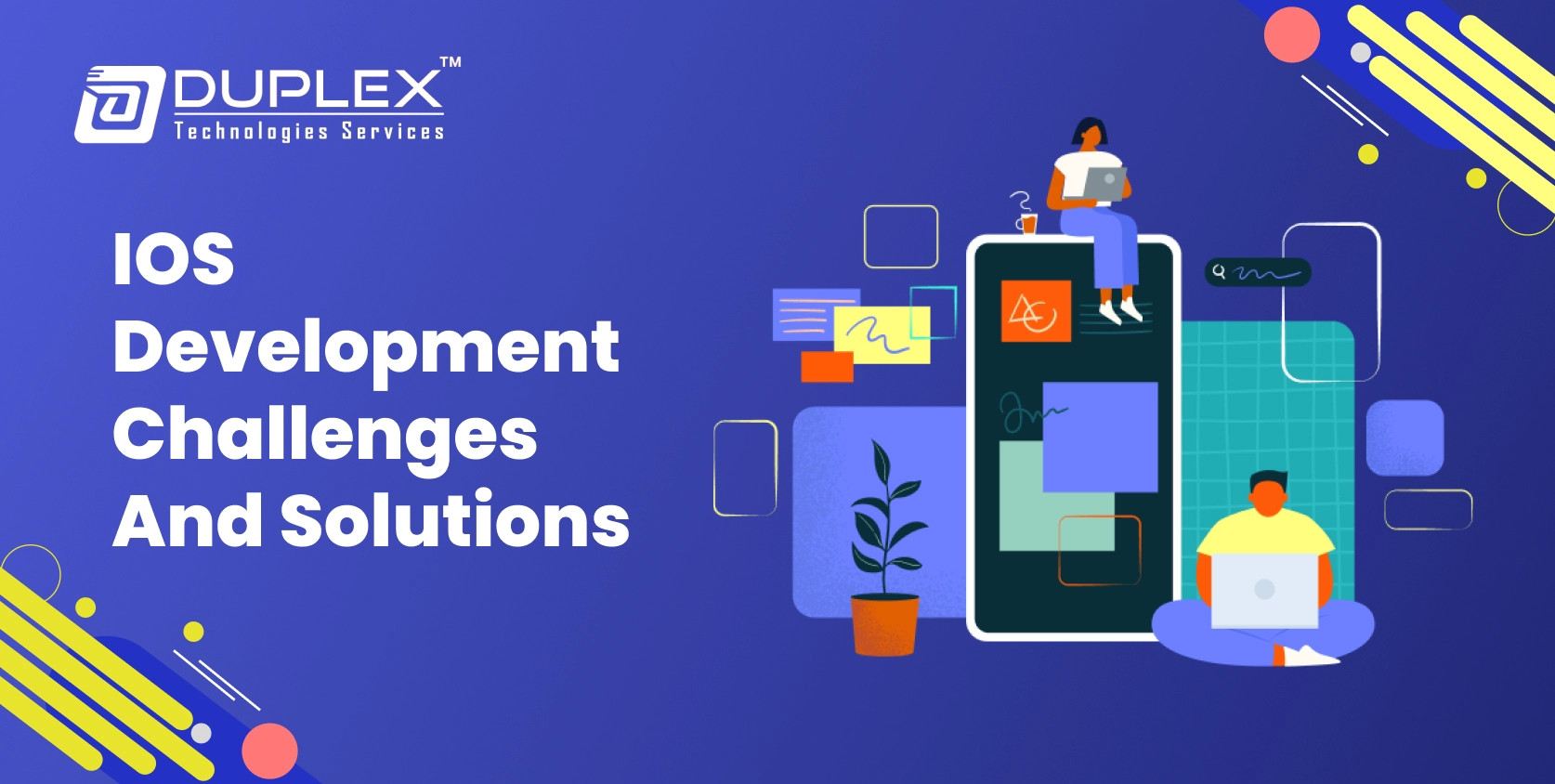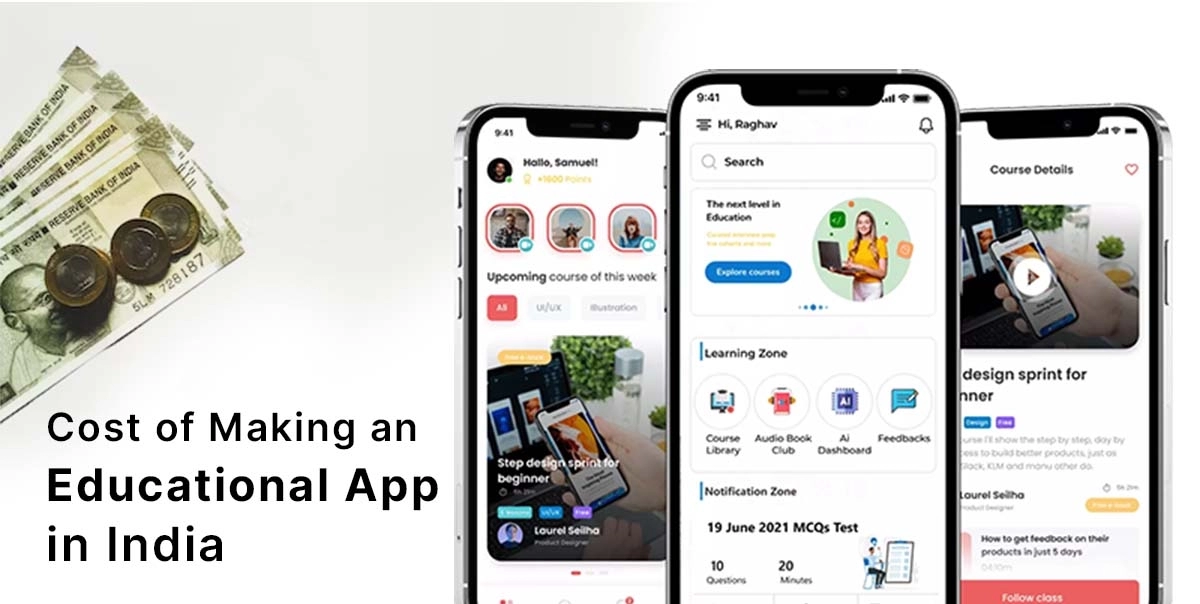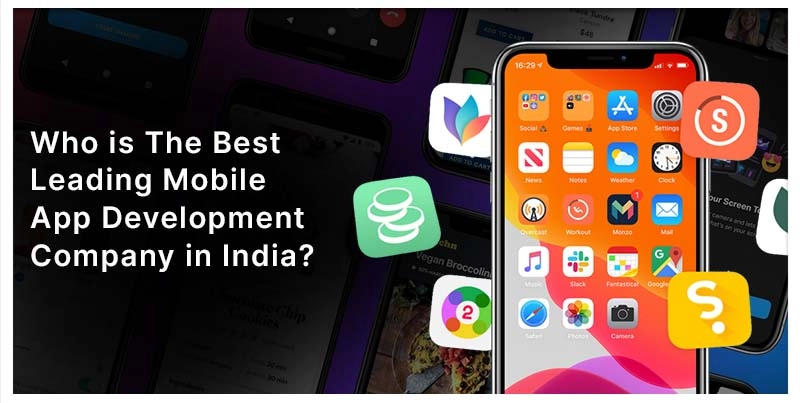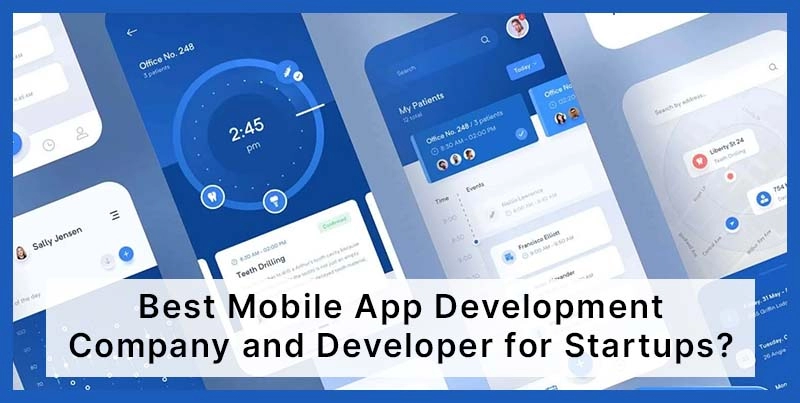Overcoming iOS Development Challenges: Common iOS Issues and App Development Problems

Posted By : Adarsh Mishra, Posted Date : Sep 28, 2024
Common Challenges in iOS Development: A detailed Analysis
In the dynamic landscape of mobile app development, one very vital platform is iOS, the powerful player that consistently delivers some of the most exciting opportunities for developers and business interests alike. However, with the best comes the worst, quite literally in this case. We at Duplex Technologies have been traversing the highly complex landscape of iOS development for several years now, meeting and overcoming the many challenges along the way. In this comprehensive guide, we are going to learn some of the most common issues of iOS development, followed by our experiences on how to master them.
Table of Contents
Memory Management and Performance Optimization
Good memory management is one of the most important things regarding iOS development. Though Automatic Reference Counting (ARC) solved many problems for iOS applications, memory-related issues sometimes appear, making an application behave poorly or crash.
The Challenge
Developers face common challenges such as memory leaks and retaining cycles. The first usually arises from objects that aren't deallocated when they're no longer needed and, therefore, use memory for no reason at all. Poor utilization of system resources leads to jerkier performances in the apps. This is especially true for older devices.
Our Approach
At Duplex Technologies, we focus on a proactive approach to memory management:
-
Use Weak References: We use weak references for delegate patterns and closures in order to prevent retaining cycles.
-
Ensure Proper Deinitialization: The developers ensure the deinit methods are implemented correctly so the resources will be released when the objects are no longer in use.
-
Use Instruments: We have to very frequently resort to using Xcode's Instruments, more particularly Memory Graph Debugger and Leaks, to detect and solve memory-related issues.
-
Optimize resource usage: We have lazy loading of views and data, which is not immediately necessary, which reduces the memory footprint and gives a cutting up app launch time.
-
Profile and Optimize: Profiles will regularly identify performance bottlenecks that we can optimize by refactoring code or improving algorithms.
By following these best practices, we ensure that our iOS applications running are smooth and efficient on a wide range of devices.
Handling Device Fragmentation and iOS Version Compatibility
The iOS world is much more homogeneous than its Android counterpart, but fragmentation on the level of both devices and OS versions still presents problems.
The Challenge
With several iPhone and iPad models running in the market, each having different screen sizes and functionalities, ensuring that the experience is identical on all of these devices becomes pretty challenging. The complexity to the whole process of development arises due to the requirement of supporting older iOS versions as well as utilizing the new features.
Our Approach
In order to overcome these issues, we need to employ the following techniques:
-
Adaptive Layout: We use Auto Layout and size classes in developing flexible UI design reaching through numerous screen sizes and orientations.
-
Feature Availability Checks: Our code contains availability checks to ensure access to newer iOS features only on supporting devices and OS versions.
-
We balance the adoption of new technologies with backward compatibility, typically supporting the last 2-3 major versions of iOS.
-
Extensive Testing: We take wide device testing and simulators beyond many others to ensure consistency throughout the entire iOS ecosystem.
-
Modular Architecture: We are designed to make modular architectures for our applications so we can easily adapt to different device capabilities and OS versions.
This approach allows us to craft apps that not only look and feel great on the latest devices but also give a solid experience on older hardware.
Navigating the App Store Review Process
This is why the process of achieving approval for new applications into the App Store can be challenging and sometimes frustrating for developers.
The Challenge
Apple does not take reviews too lightly, at times where the processes are not so clear, leading to some unexpected rejections of apps or delaying their releases. This is very worrying when deadlines are really tight, or the release of critical updates needs to happen quite quickly.
Our Approach
To make the App Store review process as simple as it could be, we:
-
Stay Updated: We constantly keep ourselves updated with the most recent App Store Review Guidelines, and change our development practice accordingly.
-
Robust Pre-submission Testing: We review our application in-depth internally before submission to identify potential issues that would lead to rejection.
-
Complete Documentation: We ensure to prepare the most comprehensive app descriptions, privacy policies, and supporting materials to clearly provide the information required by the review team.
-
Proactive Communication: We communicate proactively with the App Store review team before we roll out new features or are using specific APIs to address issues that may arise at the time of review.
-
Contingency Planning: We create some buffer time in our project timelines for review delays or even rejections.
This helped us a great deal on the success path in the App Store review process, which otherwise ensured timely releases to our clients.
Implementing Robust Security Measures
The sensitivity of the data being protected and need for its security in today's world calls for strengthening security measures in iOS applications.
The Challenge
Data of users, protection of network communications, and securing applications from reverse engineering and tampering are some complex responsibilities that require great vigilance.
Our Approach
We have security at all stages of development at Duplex Technologies.
-
Data Encryption: We have strong algorithms to secure the data both in transit and at rest.
-
Security in Networking: We implement SSL pinning, along with certificate validation, to prevent man-in-the-middle attacks.
-
Security in Authentication: We provide very strong authentication mechanisms that include support for biometric authentication in general.
-
Code Obfuscation: To deter reverse engineering, we apply a part of the code obfuscation that makes our application logic harder to understand for malicious actors.
-
Regular Security Audits: We take regular security audits and penetration tests to ensure all our identified or potential areas of vulnerabilities are dealt with.
-
Privacy by Design: We operate on a principle of privacy by design for user data that considers collection and processing.
We develop apps for iOS and take security measures at every step of development so that our users can trust their personal data with us.
Managing Third-Party Dependencies
Of course, third-party libraries and frameworks may hasten the development of making an application greatly, but then, again it introduces its own problems as well.
The Challenge
External dependency may, at its worst, lead to bloated app sizes and security vulnerabilities by requiring new libraries or iOS SDK updates for certain compatibility purposes.
Our Approach
For efficient management of third-party dependencies, we:
-
Scrupulous Assessment: We assess every third-party library on code quality, the maintenance status of its code, and the whole community support before incorporating it.
-
Dependency Management Tools: In house, to manage dependencies efficiently and in a timely manner, we make use of CocoaPods or Swift Package Manager.
-
Audits: We periodically audit our dependencies to find unused or outdated libraries that might be included within them and remove the same.
-
Modular Integration: To the extent possible, we modularly integrate third-party code so that if we should desire to replace or remove it, at least that becomes easier.
-
We often develop in-house solutions, especially if we have to have some critical functionality, thereby minimizing our dependency on external libraries and enjoying more control over our codebase.
This then helps us take advantage of the benefits of third-party libraries while minimizing the risks associated with them
Keeping Up with Rapid Technological Changes
The iOS ecosystem throws up innovation at an incredibly fast pace-new technologies, frameworks, and best practices-find their way into the market.
The Challenge
Keeping up with the latest iOS technologies and applying them well within existing projects proves daunting, considering the deliverable deadlines and unyielding client demands.
Our Approach
To keep ahead of it, we:
-
Continuous Learning: We encourage the development team to do continuous learning through workshops, online courses, and developer conferences.
-
Internal Knowledge Sharing: Many team meetings as well as a show-and-tell among the members ensure that insights and new learnings get disseminated across the team.
-
Experimental Projects: We leave time for experimental projects to try out new technologies without the stress of deadlines in view of clients.
-
Phased Adoption: We adopt new technologies gradually in our projects by initially adopting those features which we considered non-critical to minimize the risk.
-
Balanced Adoption: When we focus on harnessing state-of-the-art technologies, we balance it off with the need for stability and maintainability of our projects.
-
Continuous Improvement and Measured Adoption of New Technologies
By inculcating a culture of continuous improvement and measured adoption of new technologies, our iOS development practices are always at the industry's cutting edge.
Get in touch with Duplex Technologies at +91-9452000089 for iOS Development
This poses a challenge to IOS development since it requires both strategic thinking and technical skill in the commitment to best practices. For many years, Duplex Technologies has developed its approach to provide high-quality iOS applications that meet and exceed client expectations.
Whether it is dealing with memory management issues, working towards overcoming device fragmentation issues, or trying to keep up with the technology curve, all of them offer you the opportunity to grow and innovate. Tackle them, employing the right mindset and strategies, and you'll surely raise the bar in your iOS development endeavors and create something truly awesome in the crowded App Store.
If you face any or all of these described challenges on your iOS development journey, don't hesitate to reach us at Duplex Technologies. This is where our team of seasoned developers shows up to help customers discover the unfathomable waters of iOS development and bring your application ideas into life.
Contact us today at +91-9452000089 to discuss your project and let Duplex Technologies bring your dream into reality.







































